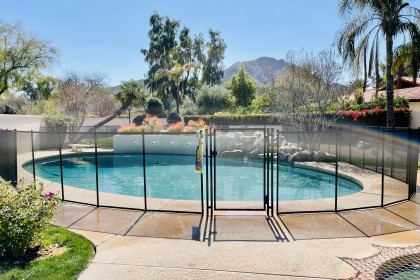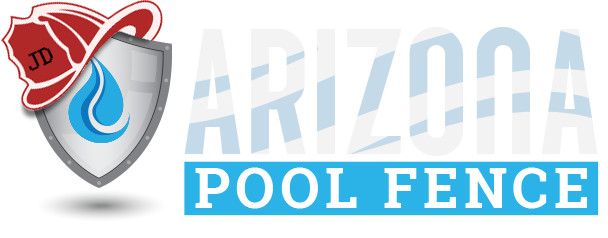Backyard Safety Tips Around a Pool

Ensuring the safety of your backyard pool is paramount to preventing accidents and creating a secure environment for family and guests. A well-maintained and monitored pool area can significantly reduce the risk of drowning and other pool-related incidents, providing peace of mind for pool owners. Pool safety encompasses various measures, from proper supervision and fencing to the use of essential safety equipment and adherence to water safety guidelines.
Understanding the importance of these safety measures is the first step in creating a safer pool environment. This guide covers key aspects such as general pool safety tips, necessary safety equipment, regulations for pool fences and gates, child safety around pools, strategies for preventing accidents, water safety tips, drowning prevention methods, chemical safety, and creating a comprehensive pool safety checklist. Each topic offers valuable insights and practical advice to help maintain a secure pool area.
By implementing these strategies, you can enjoy the benefits of having a pool while minimizing the risks. Ensuring the safety of everyone who uses the pool is a responsibility that comes with pool ownership. Taking proactive steps to address potential hazards is essential for a fun and worry-free swimming experience.
General Pool Safety Tips
Maintaining a safe pool environment starts with a few fundamental practices. Adult supervision is crucial, especially when children are present. Never leave kids unattended, even for a moment, as accidents can happen quickly and without warning. Assign a responsible adult to supervise the pool area whenever it is in use, ensuring that this person remains focused and undistracted.
Establishing clear pool rules is another vital step in promoting safety. These rules should be communicated to everyone who uses the pool, including guests. Common rules might include no running around the pool, no diving in shallow areas, and requiring children to always ask for permission before entering the water. Consistently enforcing these rules helps create a culture of safety and responsibility.
Equipping yourself with lifesaving skills such as CPR and first aid is indispensable. In the event of an emergency, knowing how to respond effectively can make a significant difference. Many local organizations offer CPR and first aid courses, which can be invaluable for pool owners. Additionally, keeping a well-stocked first aid kit near the pool area ensures that you are prepared to handle minor injuries promptly.
By prioritizing adult supervision, establishing and enforcing pool rules, and learning essential lifesaving skills, you can create a safer swimming environment for everyone. These measures are foundational to preventing accidents and ensuring a secure and enjoyable pool experience.
Safety Equipment for Pools
Proper safety equipment is essential for maintaining a secure backyard pool environment. Life jackets, rescue hooks, and flotation devices are fundamental pool safety equipment that should always be accessible near the pool. Life jackets provide added buoyancy and are particularly useful for child pool safety and non-swimmers. Rescue hooks allow a distressed swimmer to be pulled to safety without the rescuer entering the water, minimizing risk. Flotation devices, such as ring buoys and foam noodles, offer immediate support to struggling swimmers.
Pool safety covers are another critical element of residential pool safety. These covers come in various types, including solid covers, mesh covers, and automatic covers. Solid covers prevent debris from entering the pool and provide a strong barrier against accidental falls. Mesh covers offer safety while allowing water to drain through, preventing puddling on the surface. Automatic covers are convenient and can be easily deployed with the push of a button, offering both safety and maintenance benefits.
Pool Fences and Gates
Ensuring your backyard pool is secure involves adhering to pool fence regulations and selecting the right fencing options. Legal requirements for a pool fence height of at least four feet, with no gaps that a small child could squeeze through. It is crucial to check local regulations to ensure compliance and avoid fines.
Various types of pool fences can enhance the safety of your pool area. Mesh fences are popular for their flexibility and ease of installation. They are strong enough to prevent accidents while being removable when necessary. Glass fences offer a sleek, modern look and provide an unobstructed view of the pool, which is beneficial for supervision. However, they require regular cleaning to maintain their transparency. Metal fences, such as those made of aluminum or wrought iron, are durable and offer a traditional aesthetic. They are also highly resistant to damage and wear.
Effective pool safety gates are an essential component of pool fencing. These gates should be self-closing and self-latching, with the latch positioned high enough to be out of reach of small children. Some gates also feature alarms that sound when the gate is opened, providing an additional layer of security. By implementing the right pool fences and gates, you can significantly enhance the safety of your backyard pool, preventing unauthorized access and reducing the risk of accidents.
Protecting Children Around Pools
Ensuring the safety of children around pools requires proactive measures and education. Teaching children about pool safety rules is vital. Begin by establishing clear guidelines such as no running near the pool, always asking for permission before swimming, and never swimming alone. Reinforce these rules consistently, using age-appropriate language and explanations. Role-playing scenarios can help children understand and remember what to do in different situations.
The importance of swimming lessons for kids cannot be overstated. Formal swimming lessons provide children with the skills they need to be safer in the water. These lessons teach essential techniques such as floating, treading water, and basic strokes, which can be lifesaving. Additionally, swimming lessons often include water safety education, helping children understand the risks and how to avoid them. Enroll your children in swimming classes taught by certified instructors to ensure they receive proper training.
Keeping toys away from the pool area when not in use is another great safety practice. Toys left in or around the pool can attract children, leading to accidental falls or unsupervised swimming. Store pool toys in a designated area away from the water. This reduces temptation and helps maintain a tidy, hazard-free pool environment. By educating children on pool safety rules, prioritizing swimming lessons, and keeping toys out of the pool area, you can create a safer environment for young swimmers and reduce the risk of accidents.
Preventing Pool Accidents
Preventing pool accidents requires awareness of common risks and implementing strategies to mitigate them. Many pool accidents are caused by slipping on wet surfaces, diving in shallow areas, and lack of supervision. To avoid these hazards, ensure the pool deck is slip-resistant and kept dry. Mark the depth of the pool clearly, and establish rules against diving in shallow water. Constant supervision, especially for children, is essential to promptly address any potential dangers.
Safe swimming practices play an important role in preventing mishaps. Encourage swimmers to enter the pool feet-first, especially if the water depth is unknown. Teach them to be mindful of their surroundings, avoiding rough play that can lead to injuries. It’s also important to educate swimmers about recognizing signs of fatigue or distress and exiting the pool to rest as needed. Establishing a buddy system can further enhance safety, as swimmers look out for each other.
The importance of not swimming alone, especially for children, cannot be emphasized enough. Always ensure that children are accompanied by an adult who can respond quickly in an emergency. Even proficient swimmers can encounter unexpected difficulties, making solo swimming risky. By promoting safe swimming practices, maintaining vigilant supervision, and discouraging solo swimming, pool owners can significantly reduce the likelihood of accidents and ensure a safer environment for everyone.
Water Safety Tips
Understanding water depth and pool markings is crucial for safe swimming. Clearly mark the depth at various points and ensure everyone knows where it is safe to dive. Safe diving practices include always diving in designated deep areas and avoiding shallow dives. Educate swimmers on proper techniques to prevent head and neck injuries. Proper use of pool slides and diving boards is key; ensure they are installed correctly and used according to manufacturer guidelines. Supervise their use to prevent accidents and enforce rules such as one person at a time on slides and no running on diving boards.
Drowning Prevention Strategies
Recognizing signs of drowning, such as silent struggling, inability to call for help, and vertical positioning in the water, is vital for quick response. Effective supervision techniques include designated “water watchers” who avoid distractions and continuously scan the pool area. Implement poolside safety measures such as keeping rescue equipment accessible, installing pool alarms, and ensuring barriers like fences and gates are secure. Educate all pool users on safety protocols and maintain a vigilant watch to prevent drowning incidents. These proactive steps can significantly enhance safety and provide a swift response in emergencies.
Chemical Safety in Pools
Proper pool chemical safety is essential for maintaining a safe swimming environment. Safe storage and handling of pool chemicals involve keeping them in a cool, dry, and well-ventilated area, away from direct sunlight and moisture. Store chemicals in their original containers, tightly sealed, and out of reach of children and pets. Understanding chemical levels, such as chlorine and pH, is essential for preventing irritation and maintaining water quality. Regularly test and balance the water to ensure it remains safe and clear.
In case of chemical exposure or spills, immediate action is necessary. If skin or eye contact occurs, rinse the affected area with plenty of water for at least 15 minutes and seek medical attention if irritation persists. For spills, use protective gear and clean up the chemicals following the manufacturer’s guidelines. Dispose of any contaminated materials properly and ventilate the area to disperse fumes. By adhering to these safety practices, pool owners can effectively manage pool chemicals and ensure a safe swimming environment for all users.
Creating a Pool Safety Checklist
A comprehensive pool safety checklist is helpful for maintaining a safe swimming environment. Key components include verifying that safety equipment like life jackets, rescue hooks, and flotation devices are accessible and in good condition. Regular maintenance and inspection routines should cover checking the pool fence and gate for proper function, ensuring pool alarms are operational, and testing water quality. Periodically updating safety measures is crucial to address new risks and incorporate the latest safety recommendations. By adhering to a detailed checklist, pool owners can systematically ensure all safety protocols are in place, reducing the risk of accidents and enhancing overall pool safety.
Ensuring a Safe Pool Environment
Maintaining a safe pool environment involves key practices such as adult supervision, proper safety equipment, and teaching children pool rules. Regular maintenance and adherence to chemical safety guidelines are also crucial. Implementing these tips can significantly enhance safety for family and guests, preventing accidents and ensuring a fun swimming experience. Prioritizing pool safety is essential for protecting loved ones and maximizing the enjoyment of your backyard pool. By staying vigilant and proactive, pool owners can create a secure and welcoming space for everyone to enjoy.
Additional Resources
For more information on our pool safety solutions, visit our website at Arizona Pool Fence. You can also reach out to us via our contact page for any inquiries or to schedule a consultation.













